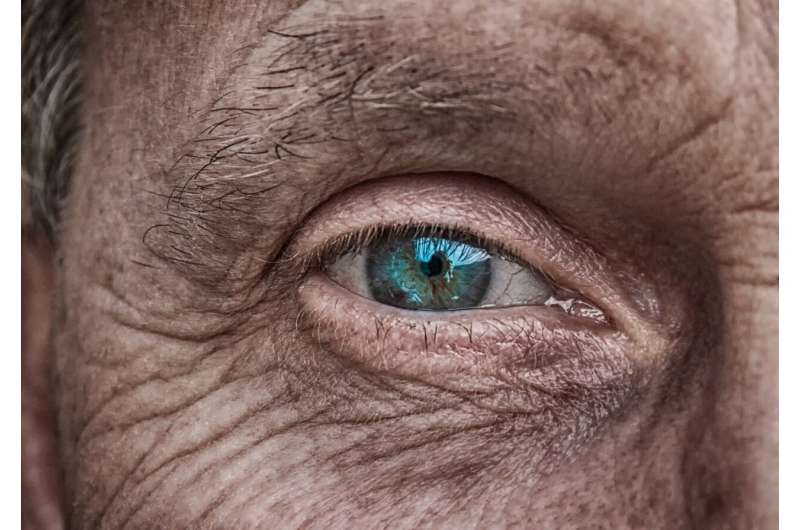This article has been reviewed according to Science X's editorial process and policies. Editors have highlighted the following attributes while ensuring the content's credibility:
fact-checked
trusted source
proofread
Extraocular muscles may provide key to defensive mechanisms against amyotrophic lateral sclerosis

A unique type of muscle fiber found in the extraocular muscles has been shown to be resistant against the disease amyotrophic lateral sclerosis (ALS), and has been shown to even increase in proportion to compensate when other types of muscle fibers decrease in proportion. This finding, by researchers at Umeå University and University Hospital of Umeå, could help with eventually finding new treatment strategies for slowing down the disease. The research is published in the journal Investigative Opthalmology & Visual Science.
"You should be very careful about talking about breakthroughs in ALS research. We are far from a curative treatment. But these results still show that everything is not only deteriorating, but that the body can also utilize defensive strategies in a way that is hopeful for future research," says Arvin Behzadi, doctoral student at Umeå University and physician.
When other types of muscle fibers atrophy in ALS patients so that they lose their function, most patients with ALS have the function of the extraocular muscles intact even late in the course of the disease. This is despite the fact that several extraocular muscles are required for the eye to move and function properly. Researchers in Umeå have found a possible explanation for this phenomenon. A unique type of muscle fiber in the extraocular muscles seems to not only be resistant in ALS, but it increases in proportion in relation to other muscle fibers that are not as resistant in ALS.
Researchers have previously shown that the extraocular muscles are only mildly affected in ALS. Now, the researchers in Umeå have taken the research one step further by investigating this unique type of muscle fiber found in the extraocular muscles that is not found in the muscles in arms and legs. By using specific antibodies that attach to different types of proteins, the researchers have managed to map three large groups of muscle fibers in the extraocular muscles and investigate changes in distribution patterns in ALS. The researchers could show that a large group of muscle fibers in the innermost part of the extraocular muscles, which have a muscle fiber composition similar to the muscle fibers in the arms and legs, decrease in proportion in ALS.
Instead, these muscle fibers that are affected in ALS are replaced by the type of muscle fiber that is unique to the extraocular muscles. These unique muscle fibers are not only spared in ALS, but they also increase in proportion. This process could possibly be an important factor in ensuring that the extraocular muscles continue to function even late in the course of the disease, when other striated muscles in the body atrophies and loses their function. However, the extraocular muscles depend on signals from nerve cells to be activated.
The fact that these unique muscle fibers are spared in ALS, and that the innervation between these muscle fibers and the nerve cells that activate these muscle fibers is preserved, could indicate that the nerve cells that control these muscle fibers might also be more resistant to the pathological process in ALS.
"The findings provide a deeper understanding of the potential protective mechanisms that the body can harness against ALS. More research is needed to investigate exactly which protective mechanisms these unique muscle fibers and the nerve cells that control these muscle fibers can use, and whether these protective mechanisms could in any way be induced in other striated muscles and nerves in other regions of the body that is affected in ALS," says Arvin Behzadi.
ALS is a severe neurodegenerative disease that leads to the loss of nerve cells in the brain and spinal cord that controls striated muscles used in voluntary movements. The disease is fatal, with a survival that varies between several months to several years from the time of symptom onset. Patients with ALS can be stratified into spinal-onset ALS, where symptoms starts in an arm or a leg, and bulbar-onset ALS, where symptoms starts in the head and neck region. In Sweden, about 200 people are diagnosed with ALS each year.
More information: Arvin Behzadi et al, Myofiber Type Shift in Extraocular Muscles in Amyotrophic Lateral Sclerosis, Investigative Opthalmology & Visual Science (2023). DOI: 10.1167/iovs.64.5.15



















